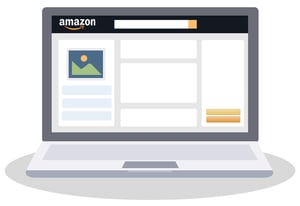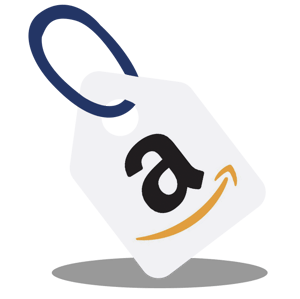Originally published on January 6, 2022, updated March 19, 2025
Menu
Join Our Email List
- Receive our monthly newsletter.
- Stay up to date on Amazon policies.
- Get tips to grow your business.
If you’re an established business or are considering starting a business as an Amazon seller, you might be wondering what to sell on Amazon. Because the competition is so fierce, it’s important to know what products will ultimately be successful on the Amazon marketplace.
It’s also important to understand why businesses choose to sell on Amazon and how to take advantage of the platform’s unique ecosystem to ensure maximum success.
At eCommerce Nurse, an Amazon-focused agency, we work with sellers all over the globe. Our clients’ catalogs range in size from thousands of products to just one or two items. We’re well-positioned to provide some insight into the best products to sell on Amazon, the issues brands encounter when selling on Amazon, and how to create a long and fruitful relationship with Earth’s biggest marketplace.
Before you jump into finding a product niche or listing your items on Seller Central, it’s important to know what you’re up against. Third-party sales continue to grow on Amazon, with more than half of all sales (56% in 2021) on Amazon coming from the third-party marketplace. Amazon shared that last year, more than 200,000 new third-party sellers from around the world started selling in the US store.
 Amazon is an extremely popular selling platform because it allows businesses of all sizes to take advantage of customers’ high trust in the company and leverage a relatively simple way of delivering items to customers via Amazon’s vast network and customer service teams. While Fulfillment by Amazon (FBA) takes a lot of the grunt work of logistics out for businesses, it can also be tricky to stay profitable.
Amazon is an extremely popular selling platform because it allows businesses of all sizes to take advantage of customers’ high trust in the company and leverage a relatively simple way of delivering items to customers via Amazon’s vast network and customer service teams. While Fulfillment by Amazon (FBA) takes a lot of the grunt work of logistics out for businesses, it can also be tricky to stay profitable.
How much can you make selling on Amazon? According to seller surveys by Amazon, the average FBA seller earns $1,000 to $25,000 a month from sales. With average margins between 10% and 20%, most sellers net $100 to $5,000 per month. Depending on your overhead, this may be a dealbreaker. But if you have the resources and time to devote to your business and you choose the right product, it can be a lucrative option for entrepreneurs. Amazon also has New Seller Incentives that can help you get your foot in the door while saving a good amount.
Two pathways exist when it comes to determining what to sell on Amazon. First, new Amazon sellers. And second, the existing brand trying to decide what items from their product range to sell on Amazon.
How do you know what's selling on Amazon? In the past, many sellers have focused on wholesale products (where your business resells another brand), or retail arbitrage. In 2022, this is such a cutthroat price war game that it’s incredibly hard to make a profit with this business model.
Instead, new sellers must go in a specific direction. They can choose a well-differentiated product with strong branding. Or, they can choose to sell a more generic product at a lower price to beat the competition.
Both options can work, but we recommend doing a lot of market research. Amazon's Product Opportunity Explorer can be a great place to start as it looks at existing categories and helps you determine under-represented areas.
Even more basically, Google searches, Alibaba, and digging into categories on Amazon to find market gaps can all be good ways to start. It can be useful to gauge opportunity if you can see niches that have lower competition, increasing demand, a simple physical product, and look at historical trends in the category.
Businesses will also want to think about the simplicity of manufacturing and procuring a product indefinitely, which can be complex when taking into account storage space, changing markets, customer return rates, and more.
If you're an existing brand with a range of products, how do you know what will be successful and worth your investment on Amazon? Depending on the number of resources, employees, manufacturing processes, and the current scale of the business, the ideal product selection and potential can vary widely.
But in general, small and medium-sized businesses do best with 10 products maximum to start. A smaller catalog will be easier to manage and track. Brands also cannot hope to be successful if they are unable to get traction and climb the bestseller rankings. Biting off more than sellers can chew is a real issue, as it’s often difficult for brands to focus on the marketing aspects and logistics of multiple products at once, especially if they're inexperienced in the Amazon platform.
 To put this in perspective, a successful product needs to be retail-ready to climb the Amazon rankings. Not only does this include all the pre-listing steps (manufacturing, storage, labeling, packaging, Amazon FBA fulfillment, etc.) but it also includes marketing the brand once it’s onsite. This means every detail from copywriting, photography, design work, Brand Stores, A+ Content, getting reviews, creating listing variations, and more. Most businesses can’t handle all of these pieces alone and will need to outsource some of the work.
To put this in perspective, a successful product needs to be retail-ready to climb the Amazon rankings. Not only does this include all the pre-listing steps (manufacturing, storage, labeling, packaging, Amazon FBA fulfillment, etc.) but it also includes marketing the brand once it’s onsite. This means every detail from copywriting, photography, design work, Brand Stores, A+ Content, getting reviews, creating listing variations, and more. Most businesses can’t handle all of these pieces alone and will need to outsource some of the work.
Then, after becoming retail-ready, the products will require constant management to ensure they’re always in stock and priced well, plus the brand will need to invest in Amazon Advertising with a high ACoS (average cost of sale) to begin with.
If your FBA business falls into either category above, margins will be very important when it comes to deciding what items to sell. For example, if a brand has a catalog of 60 products (no matter how amazing or innovative or wildly successful they are in brick-and-mortar), but the seller cannot properly manage them, what’s the point? Items must be kept in stock, priced low enough to generate sales, and the brand must invest in advertising. If too many products are mismanaged with poor margins, the business won't be profitable at all.
RestockPro can help you stay in stock and understand profitability in a deeper, more meaningful way. Instantly quantify SKU profitability with the SKU Profitability Report, or use the Estimated Margin Calculator to see whether or not an item is profitable and should be restocked.
As a result, it often makes sense to focus on the top 20% of a brand’s range. Brands can always add more to their Amazon inventory later, but investing in too wide of a range to start is often a drain on resources and ultimately not profitable. A smaller range allows the business to really push the items with the greatest opportunity for success. It’s certainly better and more lucrative to have one product in the bestseller rankings (and on page one of search results) than 300 barely ranked or not ranked at all.
On Amazon, the product category also matters. Some categories and products will be more difficult to be successful in. There is obviously a huge difference between selling a $2,000 treadmill and a $7 kitchen gadget, and the margins and logistics hurdles each of these items come with. Some categories will also have more restrictions and red tape, for example, consumables, baby, health and beauty, and supplements.
While clothing is a popular category, it also has a high rate of returns and a lot more variations (multiple SKUs to show sizes and colors on one product page) to deal with. Before listing any product, it’s important to read about the category-level requirements in Seller Central.
It’s also important to think about customer satisfaction. If you put a product on Amazon that’s misrepresented, without proper instructions, or liable to break or have defects, customers will return the item and rate you poorly. Customer experience issues can drag down an entire brand and cause the Amazon business to fail.
We encourage brands to think about what they truly have the resources to manage, and not be precious about their items. If they’re prepared to put an item on Amazon, they better be serious about investing in their success.
As of 2021, Amazon has 6.4 million sellers worldwide, with 1.5 million counted as currently active. While hundreds of thousands of new sellers join the platform every quarter, the sellers with the highest percentage of sales are those who’ve been doing it for years. More than half of the sales volume on the marketplace comes from sellers who began before 2017.
With eCommerce booming, it’s important that sellers have a feasible plan before opening an Amazon account and selling products on Amazon without thinking about what’s required to achieve success. And if a brand or business needs more help, contact an agency such as eCommerce Nurse. We support sellers and vendors on all Amazon locales, tailoring our services to your experience, needs, and budget.
Originally published on January 6, 2022, updated March 19, 2025
This post is accurate as of the date of publication. Some features and information may have changed due to product updates or Amazon policy changes.
These Stories on Amazon
14321 Winter Breeze Drive
Suite 121 Midlothian, VA 23113
Call us: 800-757-6840





Copyright© 2007-2025 eComEngine, LLC. All Rights Reserved. eComEngine®, FeedbackFive®, RestockPro®, and SellerPulse® are trademarks or registered trademarks of eComEngine, LLC. Amazon's trademark is used under license from Amazon.com, Inc. or its affiliates.
No Comments Yet
Let us know what you think